We can make an impact on wildlife and urban
communities through our gardens. How much lawn we have, how much area is devoted to impermeable surfaces and whether we include plants that build good soil all contribute to this. Even something as simple as how we clean up spring gardens makes a lasting impression on other species — leaving plant stems 12 to 18 inches tall creates a home for beneficial carpenter bees.
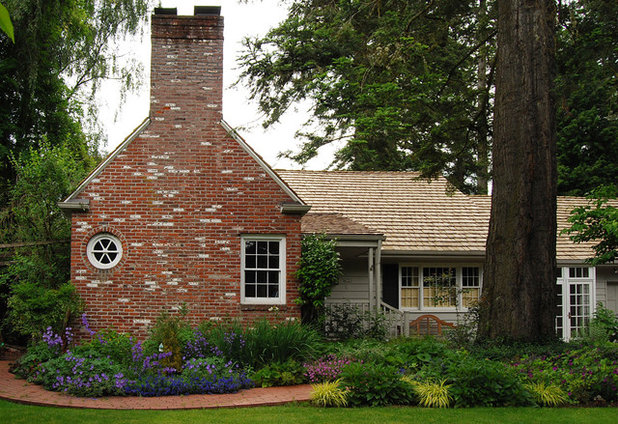
Samuel H. Williamson Associates
Bigger garden beds. Collectively our home landscapes can create vast corridors of habitat. I might even go so far as to say they provide a significant new type of wildlife refuge. Forgo the traditional lawn if you want to create habitat in your landscape since lawn does not contribute to nearby habitats and it requires so many resources to maintain it — water, mowing, blowing, fertilizing.
If you’re constructing a new landscape, let your builder or designer know you’d like to reduce the lawn with garden beds and islands. It can be as simple as increasing your foundation beds from 4 feet deep to 8 or even to 12 feet deep. Deeper beds open up the possibility for more diverse plant structure, from shrubs to flowers to grasses to ground covers, which increases habitat for the wildlife we love to see.
If you have an established landscape with lawn, selectively eradicate an area you don’t need or seldom use with a sod cutter, solarization or sheet mulch. Don’t want any traditional lawn? Think about planting a sedge (
Carex spp.) or grass meadow. A pathway or other hardscape feature that runs through the meadow shows design intent and may win over neighbors.
How to Replace Your Lawn With a Garden
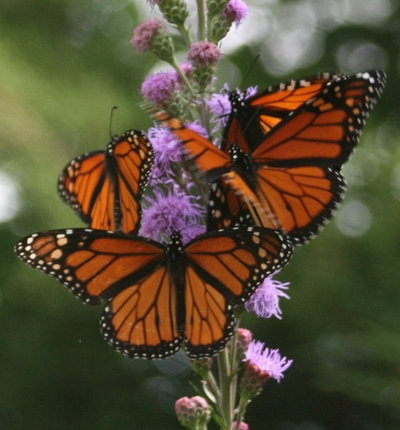
Benjamin Vogt / Monarch Gardens
More native plants. Gardening with your environment and landscape is gardening smartly. Native plants, when properly sited, can reduce maintenance (replacement costs and watering needs, among other things) because they’re adapted to your locale. Of course, native plants are also a boon to creatures that have developed special relationships with them over time. Butterflies and moths, for example, need host plants to lay their eggs, and some native bees forage for pollen on specific plants at specific times of year.
We can provide for countless relationships that are going on above and below the soil, even if we can’t see them. When you use plants that grow together in the wild, placing them near one another as they would naturally occur, you’re emulating a relationship that works aesthetically and practically.
Native Plants 101
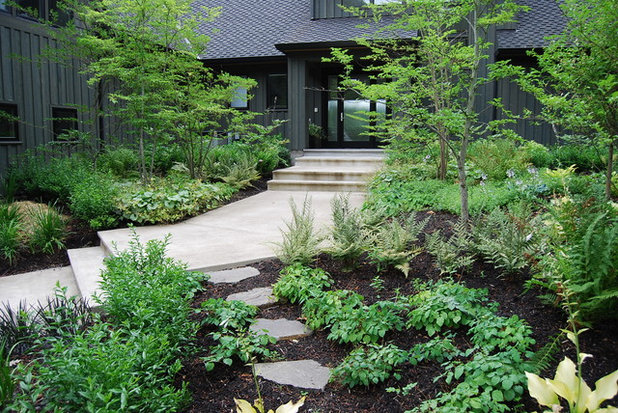
Samuel H. Williamson Associates
Healthy soil. I’m a champion of less work, so for me building healthy soil starts with selecting the right plants and using what they do below the soil line effectively. There are plants with deep taproots, those with shallow fibrous root zones and many that reach between. Putting plants with various root types together — instead of filling a bed with plants that all have the same root mass — will create zones of soil life at every level. Healthy soils increase plant health and sequester greater amounts of carbon from the air.
I’m not a fan of tilling or adding deep levels of amendments to ornamental perennial beds — it’s costly and destroys soil structure and life. I do like adding a thin layer of compost and organic mulch (leaf mold, wood chips or the cuttings of dead plants from the spring cleanup) on top of the soil.
Look at meadow and prairie plants — many lose up to one-third of their roots each year. As those roots decay, they naturally add organic matter. This is why the Midwest is filled with row crop fields — the prairies produced rich soil.
Get the Dirt on Your Garden’s Soil
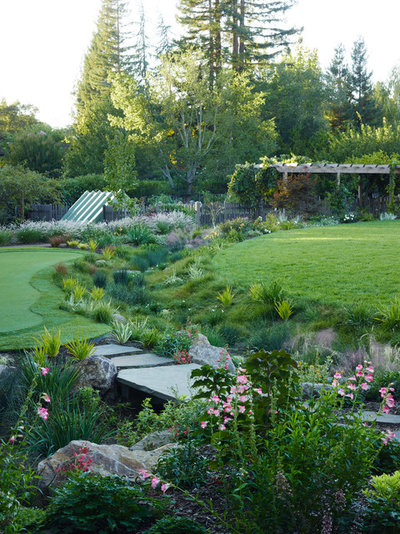
David Thorne Landscape Architect
Less water runoff. There’s a lot you can do with the water that enters your landscape, and it doesn’t have to take much investment
. Rain gardens collect water from downspouts or hard surfaces and slow the flow of water off a landscape, cleaning it as it slowly soaks into the ground and recharges the aquifers. Landscape elements like bioswales and dry creek beds, permeable paving and even rain barrels work together to further manage water responsibly in our landscapes, reducing erosion as well as runoff that overwhelms storm drains and pollutes water bodies downstream.
See more ways to save water in the landscape
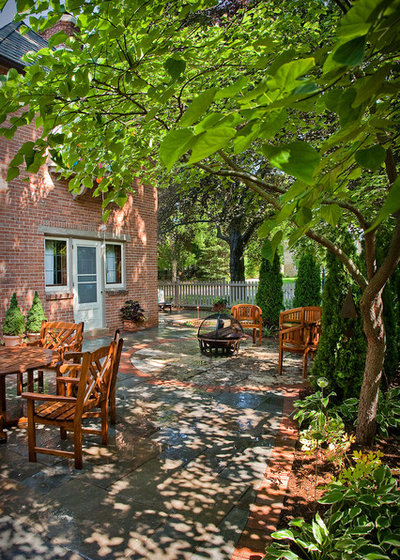
Ginkgo Leaf Studio
Trees and shrubs for energy savings. Trees are like mini ecosystems for wildlife, providing food, shelter and nesting sites. Trees and shrubs can also reduce energy consumption year-round.
Large deciduous canopy trees like oaks and elms on the south and west sides of the home, or wherever you receive intense summer sun, can help cool your home in summer. Shrubs planted along these walls will also help regulate temperature. Conifers planted downwind from prevailing winds can slow or stop winter winds from reaching your home — those winds that sneak through gaps around windows and doors, and make you reach for the thermostat.
Reducing how much you need to heat and cool your home will not only save energy, it will also lower your bills — all because you planted a few gorgeous trees and shrubs.
Your turn: What other ways are you gardening in an Earth-friendly way?





